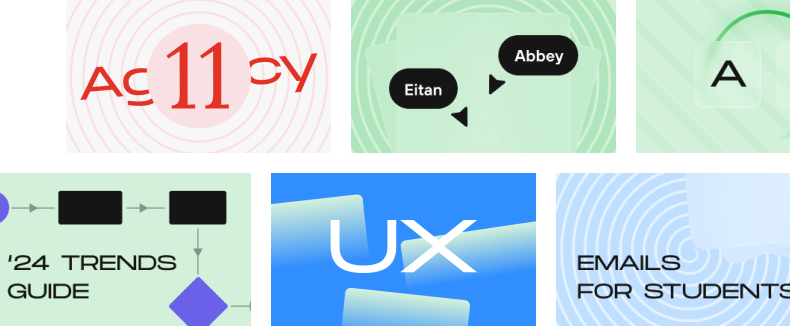What is an abandoned cart? The money we lose.
It is a well-known fact that only 33% of users complete their checkout, and the rest 67% fail to do it. Why do they leave our websites without committing the purchase? And should we remind them about their initial intentions to shop with us?
Here, our main task is:
- to define the reasons why users leave → to exclude these reasons from our website;
- to create → send out cart abandonment emails by using our newsletter email templates.
This is the proper order to decrease the number of abandoned carts among your customers.

The process of convincing the customers to get back to your website, complete the purchase is not so simple as it seems.
The reasons why the customers leave
There are many reasons why customers do this. But we have defined 11, the essential ones:
1. Shipping
Here we can define two points:
-
poor choice of delivery methods;
We shop online in order to save our time, not to go anywhere if we don’t feel well and not to meet people in the crowded brick and mortar stores. And now you ask me to go to the USPS office or — what is even worse — you offer an in-store pick-up. I’d better find another website, for my convenience, which may deliver orders right to my house.
-
shipping fee.
It’s always distracting when there are extra costs that significantly increase the total amount. Even an extra dollar can disappoint your customers and make them leave. Especially if they are not extremely interested in your products.
Please, always mention that the shipping costs are not included in the product’s price. Or for your customers’ convenience, include them in the price.

2. Taxes and extra fees
In EU, all retailers are obligated to display prices which already include taxes/VAT. While in the USA taxes fee is a separate thing. As there are no boundaries now between the countries online, we are free to choose any shop we like. In order not to confuse your customers, we strongly recommend mentioning if the taxes fee/VAT are included in the product’s price or not, well before the customers add items to their carts — as customers, we want to know what to expect.

3. Absence of assistance
When shopping in an offline store, we call shop-assistant for help. We may want to know if the fabric is stain-resistant, or if this is an artificial cotton. Nothing changes when it comes to online stores. We still may need a piece of advice. Provide your clients with live-chat help or customer’s support. It will be a good idea to even let them contact you via phone in case of emergency. This way you offer a prompt help to everyone who doubts if he or she needs to shop with you. Don’t let people change their minds. Most of the purchases are emotional.
Note: if you cannot provide customer support 24/7, make sure to notify them about it and provide with an e-address they may email at to ask some questions and to get qualified answers ASAP.
4. Customers’ distrust
For various reasons, your customers may not trust your company and have fear to share their personal information, like credit card number, CVV code, and home address. Let them know that may print out the order agreement with the seal or signature to feel secure.
And also you may offer an alternative payment method: PayPal or Amazon. This way, the customers will not have to share their personal and card information with you.

5. Incorrect prices
Does your website comprise hundreds or thousands of items? But you do not remember when for the last time you verified the prices? Do not doubt that this is one of the reasons why so many customers abandon their carts. We see a purse for $50, we expect to pay $50. But when adding the item to our cart, the prices either increase or decrease.
Of course, you may think that lower price might be ok with us. But in fact, such things as chaos scare the customers away. Update information on time.
6. Unclickable CTA buttons or poor website responsiveness
In every article, we keep saying that more and more people open emails on mobile devices. And every serious website has their mobile versions. Consequently, from now on more and more purchases and checkouts are completed on mobile devices. This tendency requires a fully responsive web design.
Adjust your CTA buttons to full-width for display on mobile devices. Care about your customers, and stop losing your money.

Here, the Cart is not clickable. But it works well on desktop devices.
7. No way to check the cart
Of course, same as in offline stores, we also want to have an opportunity to see online the items we have added to our cart. All commerce sites should have a button “Go to Cart”. If I cannot see what I’m about to buy, I am likely to leave the store.
Nike shows the cart automatically once I’ve added a new item to the cart, and they inform how many items I have already added. This is a great idea.

8. Customers just compare the prices
This is my favorite part… Clients just add the needed items to ecommerce cart to compare the total amount with two or three specific sites. It saves them from a necessity to remember prices for various products and shipping fee. Must confess, I also do this.
9. Clients need approvement
If in offline stores, women need their friends or spouses’ approvement and confirmation that this dress (meaning: lipstick, shoes, purse, scarf and maybe the dress) flatters them, in online stores they’d love to read testimonials.

Take a look at the example. Adidas lets the customers read all the reviews of each item.
10. Complicated site navigation
CTA button “add to cart” should be applied to every item displayed on your website. This is a very bad practice to make your customers remember the item number and then insert it when they finally get to your website.
11. Inactive coupon
Very frustrating when clients do not know where to insert the coupon number — no proper line in the order form. Or it happens to some companies, that you see this line, insert the coupon but nothing changes — the price remains the same. This incident happens for 2 reasons: the site doesn’t work properly or the coupon has expired.
According to the psychological investigations, we may buy a purse or a tie for $547 when need it, but we are so unlikely to buy them for the very same price knowing we could do that for less price.
So when the coupon we have been offered doesn’t work, we feel like we’ve been lied to.

So, we have finished task 1 on our list — defined the reasons why customers leave. Consequently, now our duty is to get rid of those reasons.
Let’s get to the task 2 — creating an abandoned carts emails. According to Statista, only 35% of retailers send event-triggered abandoned cart emails. Why so few? As 60% of the customers of those who receive abandoned cart email reminders get back and complete the checkout.
Perfect reason to start sending them out.
How to create abandoned cart email
Before sending out any newsletter or a triggered email, we should prepare a template.
Choose any of the abandoned cart email templates here. Personalize it, replace our images with yours, insert your product’s price and description.
These messages are not promotional, they are the triggered ones, and are sent automatically every day to your customers.
The email design should be simple and reserved, as your goal is to remind and once again display the products, but not to distract with other offers.

Once you create the template and choose the design you like, export this email to your ESP — they will write scenarios, insert appropriate images and send these emails to those who have not completed the checkout with you.
Abandoned cart email best practices
Now let’s discuss the obligatory components for the best abandoned cart emails which provide you high profit:
1. Concise subject lines
All emails start with the subject lines. A perfect subject line hints the customers what’s inside the message.
Of course, we may say something, like “You left something in your cart” or “You forgot to checkout”. But this is not the best idea.
You may do it like Mack Weldon and the Asics. Their subject lines say, “Take another look” and “Still thinking about it”, respectively. Or make it a funny one, “Don’t forget about me” — these all are examples of catchy yet clear abandoned cart subject lines.
I don’t like being urged and hurried, but some people might like the following cart abandonment email example:

2. Introduction
Mention the reason why you are reaching out to the customers. A good abandoned cart email has to be kind and not imposing. People should not feel annoyed or that they are forced to proceed to the checkout. We all work for people, to make their lives a little bit better. Stay polite and concerned.

3. Personalized emails
Many of our emails may start with a simple “Hello there” or “Dear Name” but none of the best abandoned cart emails does. Let the customers know you are aware of what is happening on your website, and what they are looking for.
What do we understand as personalization here:
- customer’s name;
- the items he or she was looking for;
- mention the items are still in stock. Thus, you should have checked it prior to sending emails;
- you may offer another payment method in case your customer left when writing in this kind of information.

4. Provide testimonials
It would be just great if you could provide your customers with the other customers’ feedback on every item in the cart. True honest feedback.
Please, take a look at this shopping cart abandonment email example by Adidas. It’s perfect and seems to be quite honest.

5. Discount for the items in the cart
The discount on the items your prospect was going to buy, may convince him or her that your store fits him or her best.
Of course, here we may mention the expiration date of the coupon.

Note: contact your ESP to find out if they can help you with creating scenarios. And mention the things you want them to add to your emails.
6. Images
When sending an abandoned cart email, please always include the images of the products from the cart. The customers may forget the name of the item they added yesterday or even an hour ago. “Blue cotton shirt is waiting for you” won’t mean anything to your client. He or she has seen hundreds of them yesterday. When you add the image of the item, he or she knows what shirt you are talking about. Be more specific in your messages.
This is one of the great cart abandoned email examples

7. Total amount
Make sure to include the total amount of the purchase to the email.

8. Create scenarios
The scenario here plays the most central part. I sincerely hope that your ESP is quite capable of creating a proper one. They should help you track the abandoned carts, and then send out proper reminders.
How often and when are you supposed to send out abandoned cart reminders? This is quite individual. But our Email Service Provider has investigated the market and billions (this is true) of messages sent, and now they state the best solution here is:
- write a sequence of emails;
- send the first one within 2 hours after the purchase was not completed;
- send the second reminder the next day;
- if the first two reminders did not work out, then the third reminder should be the last one. Should be sent 48-72 hours later.
Why should we send emails so soon? Because your customers may forget about your specific store and buy similar products somewhere else.

Conclusion
We are convinced that we should send emails of this kind, as 60% of our customers tend to come back and complete the checkout.
Rules to follow to decrease the number of abandoned items:
- Enable your customers to print out their order with seals and signatures;
- Live chat or customer support service. No need to make it 24/7, but at least during standard business hours your clients should have a possibility to ask for assistance;
- Responsive web-design and mobile-friendly emails;
- Include shipping costs in the products price or inform the customers about shipping costs beforehand;
- Check the prices on your website.
Rules to follow when creating abandoned cart emails
The best abandoned cart email examples provided on the web were written in accordance with them:
- Links in the email should take directly to the cart;
- Provide testimonials;
- All the discounts you offer should be valid;
- Create a sequence of abandoned cart reminders;
- Personalize all abandoned cart emails;
- Subject lines should be appealing and concise;
- Include images of the “abandoned” items;
- Email design should be simple, yet bright, with on-brand colors and logo.
Important to remember that once the customer has completed the checkout, you should send an order confirmation email.
I hope that this article is helpful, and you will implement our abandoned cart email best practices based on the thorough research and our own experience.
Bring your customers back and convince them to finish the checkout with the Stripo abandoned cart email templates which are here to facilitate your work.
I wish you all the best.








0 comments